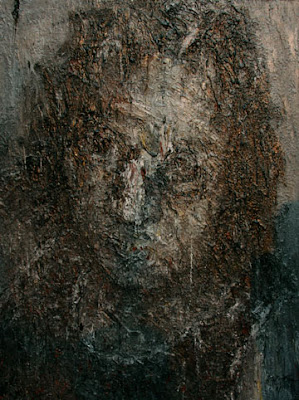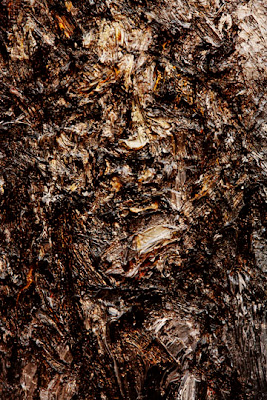UK born and Sydney-based artist Ash Hempsall is a long time friend of The Art Life and is an occasional contributor. Now resident in Shanghai he’s started his own bilingual blog The Viewing Experience. Since Blogger is banned by the Chinese Government, Hempsall has used a non-banned New Zealand blogging service to provide his readers with profiles and interviews with emerging artists and more established names starved of coverage and information. Thanks to Hempsall, he’s allowed us to share with you the first outing of the blog…

We sit in the narrow studio on the 3rd floor of the old French Concession villa. Once it would have been a minor bedroom in the house. But the house is no longer a house and has been divided up into a coven of tiny apartments – perhaps to the same division now as when it would have been requisitioned and re-allotted as public property to families in the Revolution years.
The room has a corridor feel to it, being so much longer than it is wide.Incomplete or abandoned canvases face the wall the length of the room like punished children . The homey wallpaper is 50’s possibly 60’s even 70’s floral with a satiny sheen and its kitsch is strangely comforting.
The current work in progress takes up the far end.
Next to this painting is a broad palette. Painter’s palettes are interesting things. They are a genesis of process – the zygotic point in the life of paintings; egg and sperm meet as pigment and oil. You could see them as fascinating, ever-changing, never-completed paintings in their own right. A compendium of them would make an excellent coffee table book.
In Tien Ling’s palette, the fat swell of layer upon layer of paint has formed a literal wave shape; crest and trough in a grey sea within whose murky depths hang jellyfish blobs of colour .
We smoke throughout our three-way conversation. Only one of us, Xiao Kou, is able to speak both languages. Cigarettes provide a universal language – as if our smoke exhalations were speech bubbles meandering through the air and drifting into each other.
“The paintings in this series seem to be portraits. Who are they of?”
“Well yes, they probably start out with the intention to be ‘of’ someone. But I’m more seeking to capture the likeness of a feeling or a state of mind. However, in attempting to do that – to capture a certain feeling through style – I fail. Again and again until I become disheartened and, finally, I give up asking for something from the painting altogether. And that’s when the painting gives you what it will”

We pause to look around and the heavy impasto licks at you from all angles.
“That’s the thing about the paintings, isn’t it? They ultimately come back to the medium, the paint. The portraits are even more anonymous for the fact that the representation is physically superseded by the medium.”
“ I don’t really think of them as portraits.”
The most densely painted works are indeed as much abstract as figurative. The subjects are barely there. They stare dimly out at you from the geology of themselves. There’s a constant accession and recession of the image, undulating in the eye like that palette wave.
The depth of texture competes as subject matter in itself, inviting you to view the paintings in different ways. Perhaps as a satellite view of some twilight terrain, the image of Man just a stain within it. Or maybe as a successive line of Dorian Grays – the representation being not so much of the face but of the magnificence of their sin. In the work there’s an underlying sense that the paintings are still forming, growing at fingernail speed.

He wants the gestures and marks returned to him with an emotional force and impact commensurate with the physicality of the making. Of course, it’s the same impetus that has driven painters since the beginning of art. But it feels refreshing to see it restated in such a bold way, from the cave wall.
The faces, as can be seen, are not discernibly chinese – over here one is reminded of a morose, flaking official from a Roman mural, over there a beaming, crusted cavalier. The art historical references he makes are mostly to European Old Masters; particularly work from the end of their careers – late-period Titian, Death’s door Rembrandt, last-gasp Goya.
And it would be easy to ascribe greater kinship with Kossoff, Auerbach or Giacometti’s ‘trembling figures’ than with anything traditional or contemporary in Chinese art. But this would be disingenuous. Firstly as it would deny his own cultural heritage, evident from how he talks about process in terms of a Daoist sensibility. Secondly, the way the paint is worked differs. While brush, knife and finger are all employed, the ‘movement’ in the painting really is from a different place.

Looking out of the window, at the road and pavement below, that difference of movement is right there, there in the traffic. The negotiation and re-negotiation between pedestrian, moped, bike and car – sidewalk turned into truck stop, highway into promenade. The ballet of A to B. (It’s been described to me as calligraphic.)
Likewise, when Tian Lin paints, it comes from a distinctly chinese nature even if not immediately apparent.
As the last of the cigarettes sends up a final whisp of comment so it becomes time to go. We look forward to seeing how Tian Lin develops this work. Or rather, how next the painting will give what it will.
Shanghai, January 2008
